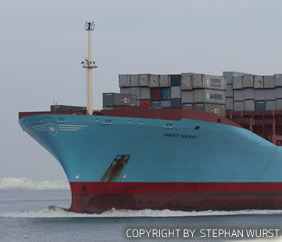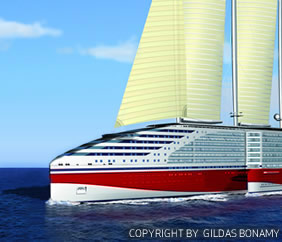Arctic Cargo Vessel

Arctic, or ice classed, cargo ships is a wide definition, and the ship size range covers all sizes of the ships. In the European area these ship types are required only in Baltic navigation and arctic areas, e.g. Greenland. The future expectation is that shipping activity in the Arctic regions will grow rapidly due to the large reserves of oil, gas and other natural resources in Russian Arctic and since the most economical way to export these resources is by sea. This means that more and more ship owners will have to obtain ships with high ice class to ensure safe and year round operation and this is also why the operation profile is selected to adapt that.
Read more ...Wind Assisted Cargo Vessel

There are only a few wind assisted cargo vessels active in commercial trade. Wind is, nonetheless, the cleanest form of propulsive energy one can think of and also one of the oldest. Rising fuel prices and more stringent emission legislation have given research into wind propulsion a new élan. There are many types of wind assistance: sail, kite, Flettner rotor, wingsail, wind turbine. This application case will look into the possibilities of the most promising technologies and aims to reduce the emissions of a short sea cargo ship to an absolute minimum while maintaining the operational efficiency.
There are, now, two types of wind assisted cargo vessels. Those that transport very expensive and exclusive cargo, like wine, tobacco et cetera, where the end customers of the cargo are willing to pay for the additional costs of this alternative, green transportation method and there are the prototype vessels, used for measurements and mostly built with extensive funding.






